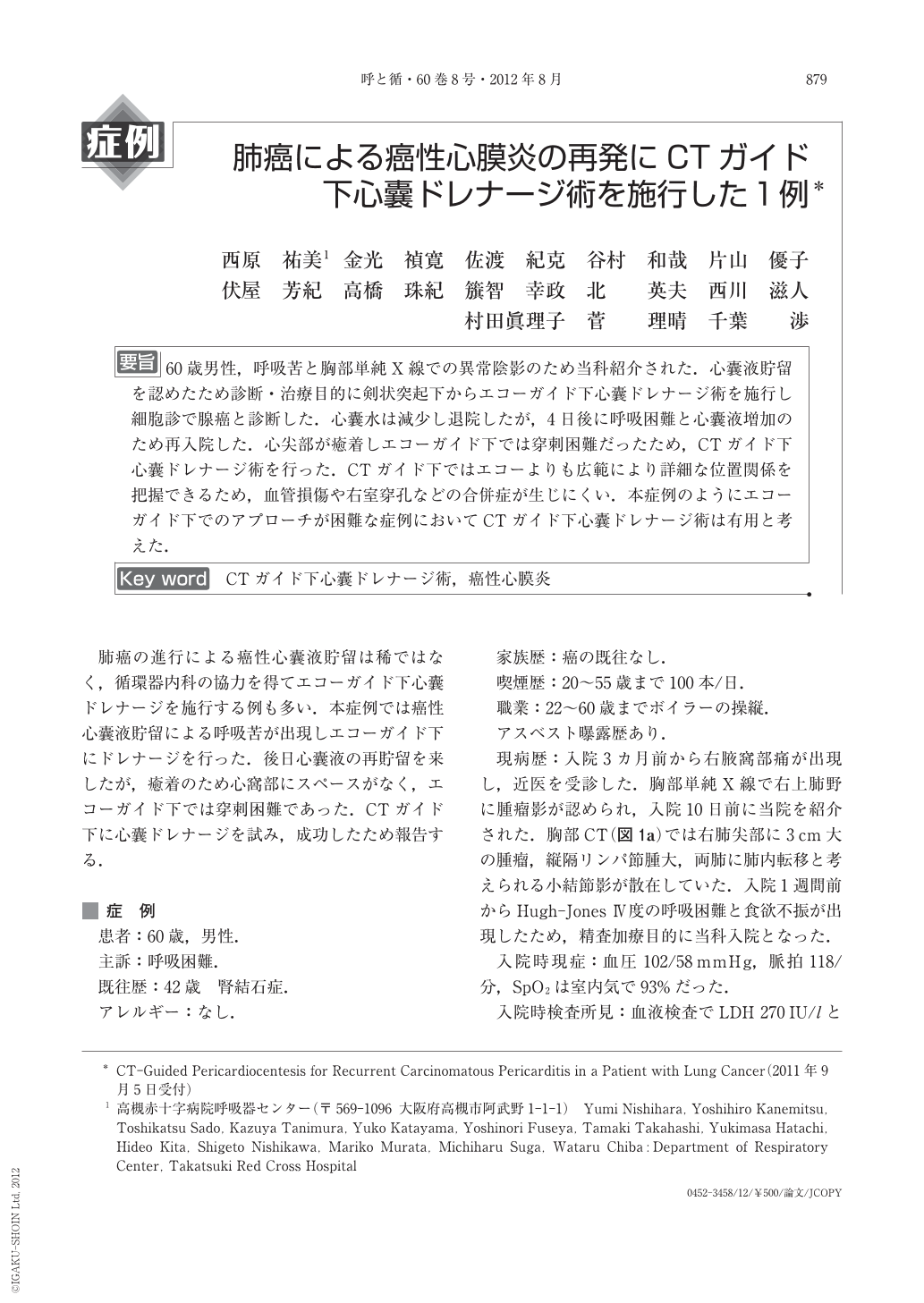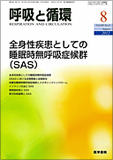Japanese
English
- 有料閲覧
- Abstract 文献概要
- 1ページ目 Look Inside
- 参考文献 Reference
要旨 60歳男性,呼吸苦と胸部単純X線での異常陰影のため当科紹介された.心囊液貯留を認めたため診断・治療目的に剣状突起下からエコーガイド下心囊ドレナージ術を施行し細胞診で腺癌と診断した.心囊水は減少し退院したが,4日後に呼吸困難と心囊液増加のため再入院した.心尖部が癒着しエコーガイド下では穿刺困難だったため,CTガイド下心囊ドレナージ術を行った.CTガイド下ではエコーよりも広範により詳細な位置関係を把握できるため,血管損傷や右室穿孔などの合併症が生じにくい.本症例のようにエコーガイド下でのアプローチが困難な症例においてCTガイド下心囊ドレナージ術は有用と考えた.
A 60-year-old man was admitted to our hospital because of abnormalities on chest X-ray. He complained of dyspnea on day 2 of admission. Since he was found to have an increased cardiothoracic ratio(CTR)on chest X-ray and circumferential pericardial effusion on transthoracic echocardiogram, ECHO-guided pericardiocentesis from the subxiphoid approach was performed. The cytological specimen obtained from the pericardial effusion revealed adenocarcinoma. After treatment with Erlotinib, he was discharged. He became unable to breathe again on day 34 after the first admission. He was readmitted to our hospital for suspected recurrence of carcinomatous pericarditis by the elevated CTR on chest X-ray. He underwent CT-guided pericardiocentesis instead of ECHO-guided pericardiocentesis using the subxiphoid approach because of adhesion of the ventricular apex. CT-guided pericardiocentesis was useful in that there was a lower risk for complications such as ventricular perforation when reaching intrathoracic anatomic locations by CT scan rather than ECHO-guided pericardiocentesis and it was difficult to perform ECHO-guided pericardiocentesis using the subxiphoid approach because of adhesion of the ventricular apex as was seen in this case.

Copyright © 2012, Igaku-Shoin Ltd. All rights reserved.


